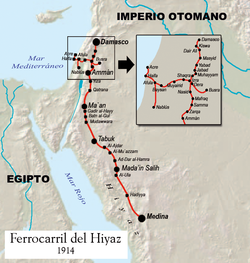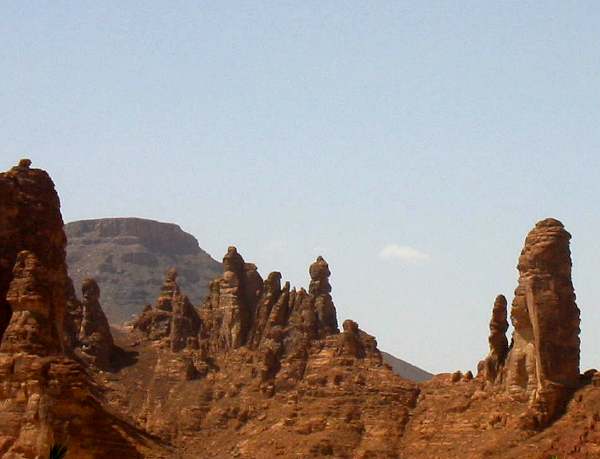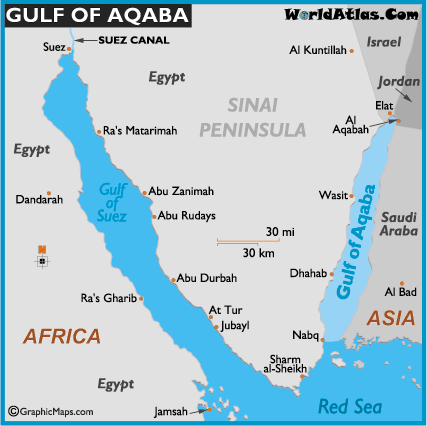Latakia - Is Syria’s main sea-port on the Mediterranean. It lies 186 km southwest of Aleppo, 348 km northwest of Damascus. It has retained its importance since ancient times.
Though there is evidence to suggest continuous settlement here stretching back to 1000 BC, Latakia only came to prominence in the wake of Alexander the Great's conquest, when is was transformed into a major city of the Seleucid empire. Renamed in honour of Loadicea, the mother of Alexander the Great's general Seleucus I Nicator, it developed into an important port and becoming the main supplier of wine to the Hellenistic period. The town was briefly declared capital of Syria in the late second century AD by Septimius Severus. Devastating earthquakes in 494 and 555 badly damaged Latakia, but was rebuilt by Justinian before being seized by the invading Arab army in 638. After being captured by the Crusaders in 1097, the town oscillated between Muslim and Christian control for nearly a century, until it was retaken by Saladin in 1188.
Some attractions in the city include a museum, that was an old Ottoman khan which served as the governor's residence during the French mandate. The museum houses some interesting examples of pottery, glassware, clay tablets from nearby Ugarit, and contemporary paintings. Another attraction to the city is a Roman gateway (Tetraparticus) that consists of four columns.
The Syrian seashore is about 182 km long and its numerous beaches are distinguished by soft sand, unpolluted sea, moderate climate and clear blue skies. The Blue Beach of Latakia is the most popular beach on the Eastern Mediterranean. Water-skiing, jet-skiing, and windsurfing are popular activities in this resort town. Nearby are two hotels, the Cham Cote d'Azur Hotel and Lé Merdien Latakia Hotel.
The Syrian coast consists of long stretches of beaches and green mountains. These mountains are mostly covered with pine and oak trees, and their slopes touch the shore. This landscape repeats itself from Ras Al-Basit in the north to Tartus in the south. On the mountains, villages and towns are scattered, with springs of clear mineral water.
Surrounding attractions, include Ugarit at Ras Shamra, Qalaat Saladin - a formidable castle that has been well preserved, Slunfeh, Kassab and Ras al-Bassit.
Salahuddin's Castle
The Citadel of Salah Ed-Din (once known as Saone, also known as Salahuddin Castle) is a castle in Syria. It is located 30 km east of Latakia, in high mountainous terrain, on a ridge between two deep ravines and surrounded by forest.
The castle was built in ancient times, possibly during the Phoenician period (early first millennium BC). The Phoenicians are said to have surrendered it to Alexander the Great about 334 BC. Not much is known about what happened to it between this period and the return of the Byzantines in the 10th century AD. Emperor John I Tzimisces gained control of the place from the Aleppan Hamdanid dynasty, and built the first of its defensive structures. It then fell in the hands of the Crusaders at around the beginning of the 12th century. It is mentioned that in 1119 it was owned by Robert of Saone who was given control of it by Roger, Prince of Antioch. Most of what is evident today was built at this time. The Crusader walls were breached by the armies of Muslim leader Salahuddin in July 1188, and it is from this victory that the castle takes its present name.[1]. The castle remained in Muslim hands until the times of Egyptian sultans Baybars and Qalawun.
One of the most magnificent features of the fortress is the 28 m deep ditch, which was cut into living rock probably by the Byzantines (it might have been completed by the Crusaders). This ditch, which runs 156 meters along the east side, is 14 to 20 meters wide and has a lonely 28 m high needle to support the drawbridge.The entrance to the castle is through an entrance on the south side of the fortress. On the right of the entrance is a tower, a bastion built by the Crusaders. There is another a few meters further. There is a cistern for water storage and some stables just next to a massive keep that overlooks the ditch. This keep has walls of 5 m thick and it covers an area of nearly 24 m². Further on to the north is the gate where the drawbridge used to be. Also evident are the Byzantine citadel, located at the center of the fortress, another large cistern, the Crusader tea house, and a Crusader church adjoining one of two Byzantine chapels.
As for the Arab additions to the fortress they include a mosque, which dates back to sultan Qalawun, and a palace, which includes baths with courtyards and Diwans. This has been slightly restored.
To come:- I am having difficulty uploading the main video with 25 minutes footage inside the cave - file too big at 60MB - trying to edit and split into two files and will upload then. Worth a revisit for that footage.Video 1 - Qal’at Salahuddin
Video 2 - Qal’at Salahuddin
Video 3 - Qal’at Salahuddin
Video 4 - Qal’at Salahuddin - Inside the Castle
Video 5 - Qal’at Salahuddin - More Inside the Castle
Video 6 - Qal’at Salahuddin - Engineering Marvel
See how the constructed free standing arches, the rocks were precision cut at angles so that they locked into each other and would not slide straight down. In this video, you can see how even a broken arch is still suspended in the air and the rocks are not falling down as they are locked by their geometry.



























